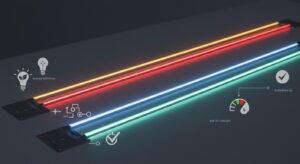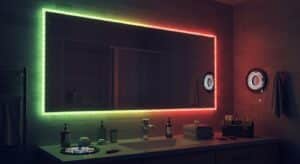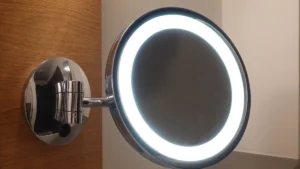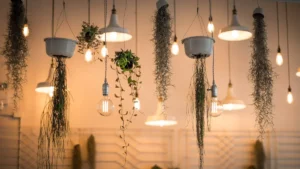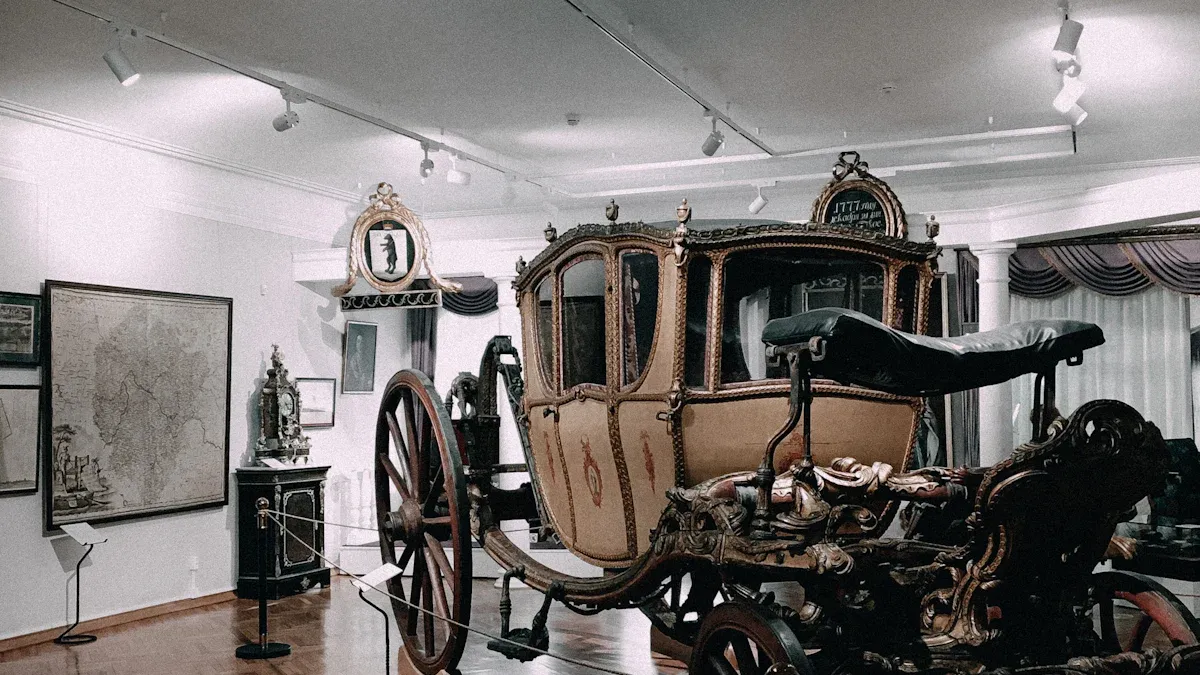
When it comes to museum lighting, you need a solution that enhances displays while protecting artifacts. The 2835 LED strip stands out with its exceptional brightness and energy efficiency. These LEDs deliver light efficiency ranging from 100 to 210lm/W, making them a superior choice compared to traditional options.
Feature | 2835 LED Strips |
|---|---|
Light efficiency | 100-210lm/W |
Power Consumption | Middle & High |
Heat Generation | Middle & High |
Unlike conventional lighting, these strips emit minimal heat, ensuring your artifacts remain safe. Their precise control eliminates UV exposure, preserving delicate materials. With versatile design options, you can create captivating displays that leave a lasting impression on visitors.
Key Takeaways
2835 LED strips are bright and save energy. They use 75-80% less power than old lights. This lowers electricity bills and improves artifact displays.
These LED strips stay cool and have no UV rays. They protect delicate artifacts from harm. Use them safely to keep exhibits in good condition.
Different color options (3000K, 4500K, 6500K) fit various displays. Pick the right color to make artifacts look better and set the mood.
Benefits of 2835 LED Strip Lighting for Museums
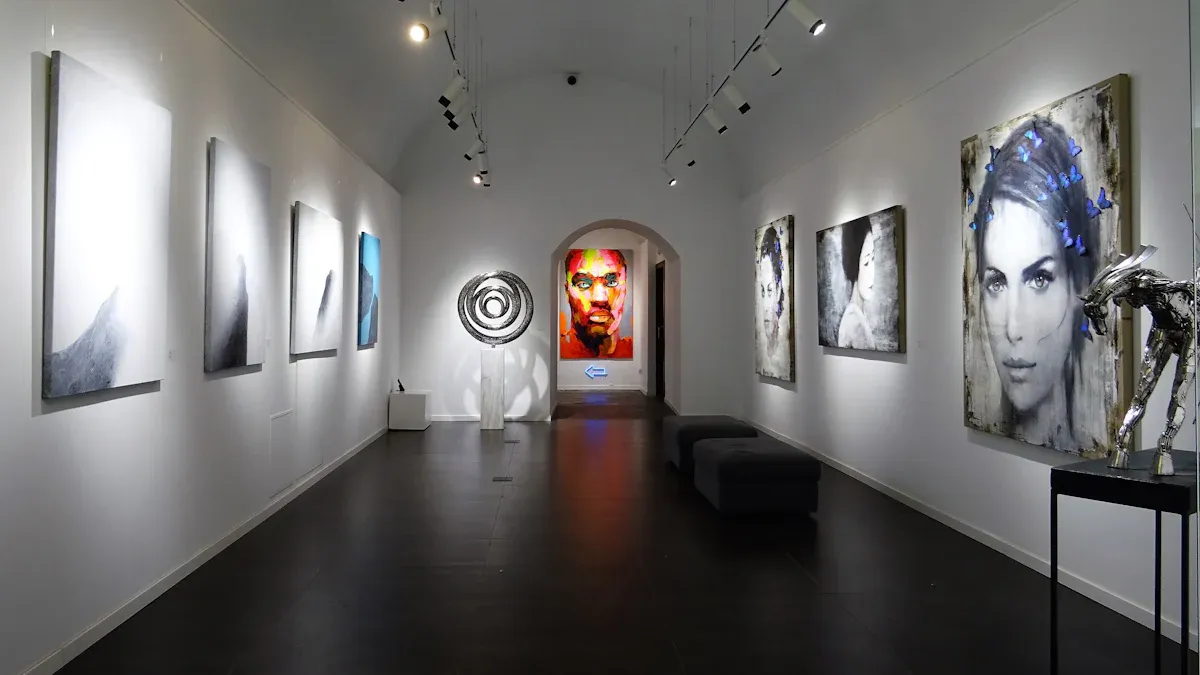
High Brightness and Energy Efficiency
When you choose 2835 LED strips for museum lighting, you gain unmatched brightness and energy efficiency. These LED strip lights consume significantly less energy than traditional lighting options, helping you reduce electricity costs while maintaining optimal light levels. In fact:
LEDs are 75-80% more efficient than conventional lighting.
They produce the same amount of light while consuming far less energy.
Over time, the savings on electricity bills can offset the initial investment.
The 2835 LED strip can produce up to 720 lumens of light per meter, making it an excellent choice for illuminating artifacts. Its superior efficiency compared to 5050 LED strips ensures you get brighter displays without increasing energy consumption. By switching to these LED strip lights, you also contribute to your museum’s sustainability goals.
Low Heat Emission for Artifact Preservation
Protecting artifacts is your top priority, and 2835 LED strips excel in this area. Unlike traditional lighting, these LEDs emit minimal heat, ensuring delicate materials remain unharmed. Excessive heat can damage sensitive artifacts, but with 2835 LED strips, you can confidently highlight your displays without risking preservation.
Additionally, these LED strip lights eliminate UV exposure, which is another common cause of artifact deterioration. By using this advanced lighting solution, you ensure your exhibits remain vibrant and intact for years to come.
Tip: Use 2835 LED strips in enclosed display cases to maintain a controlled environment for your artifacts.
Versatility in Color Temperature and Design Options
The versatility of 2835 LED strips allows you to customize your museum lighting to suit any exhibit. These strips come in various color temperatures, each offering unique benefits for artifact presentation:
Color Temperature | Description |
|---|---|
3000K | Warm White |
4500K | Natural White |
6500K | Bright White |
Warm white (3000K) creates a cozy and inviting atmosphere, while bright white (6500K) enhances fine details and textures. Natural white (4500K) strikes a balance, offering a neutral tone that works well for most exhibits. High CRI (Color Rendering Index) values ensure accurate color representation, so your artifacts look as authentic as possible.
With 2835 LED strips, you can also experiment with different designs, such as linear lighting or accent lighting, to create a visually stunning exhibit.
Preparing for 2835 LED Strip Installation
Addressing UV and Heat Concerns
When preparing for the installation of 2835 LED strips, addressing UV and heat concerns is crucial to protect your artifacts. These LED strip lights emit minimal heat and no UV radiation, but the adhesives and mounting methods you choose can impact their performance.
To ensure a secure and long-lasting installation:
Always check if the adhesive is UV-resistant.
Use waterproof adhesives in areas prone to moisture.
Opt for silicone-based adhesives in high-humidity environments.
For high-temperature areas, heat-resistant tape works best.
On smooth indoor surfaces, industrial-grade double-sided tape provides excellent adhesion.
Environment | Recommended Adhesive |
|---|---|
High humidity | Silicone-based adhesive |
High temperature | Heat-resistant tape |
Indoor smooth surface | Industrial-grade double-sided tape |
For added durability, consider using mounting clips or aluminum profiles. These options reduce stress on adhesives and prevent sagging, especially on vertical surfaces. This approach not only enhances the longevity of your LED strip installation but also ensures a clean and professional look.
Selecting the Right Color Temperature
Choosing the right color temperature is essential for creating the perfect ambiance in your museum exhibits. The type of artifact, exhibit theme, and visitor preferences all play a role in this decision.
Here are some tips to guide your selection:
Use warm white (3000K) for a cozy and inviting atmosphere.
Opt for natural white (4500K) for a balanced and neutral tone.
Bright white (6500K) works well for highlighting fine details and textures.
For art exhibits, a color temperature around 3700K enhances the appearance of artifacts.
The original intent of the artist and the material of the artifact should also influence your choice. For example, textiles and paintings often look best under warm or natural white light. By carefully selecting the color temperature, you can ensure your exhibits look authentic and visually appealing.
Determining Optimal Brightness Levels
The brightness of your LED strip lights directly impacts how visitors perceive your exhibits. Different materials and artifacts require specific light levels to ensure safety and visibility.
Material Type | Recommended Lux Level |
|---|---|
Very sensitive items | 50 lux or less |
Oil and tempera paintings | About 200 lux |
Resistant materials (stone, glass) | Up to 300 lux |
For very sensitive items like textiles or historical documents, keep the brightness below 50 lux. Oil paintings and similar artifacts can handle up to 200 lux, while more durable materials like stone or glass can tolerate up to 300 lux.
Consider your audience as well. Older visitors may need higher light levels to see details clearly. Curatorial choices, such as the desired ambiance or focus on specific objects, also play a role. By adhering to these guidelines, you can create a well-lit exhibit that enhances the visitor experience while preserving your artifacts.
Step-by-Step Installation Guide for 2835 LED Strips
Choosing the Right LED Strip for Your Display
Selecting the perfect 2835 LED strip for your museum display is crucial for achieving the desired effect. Consider these factors:
Brightness: Choose a strip with adjustable light levels to create drama or intimacy.
Energy Efficiency: Opt for LEDs that reduce energy consumption while providing sufficient illumination.
Heat Management: Ensure the strip emits minimal heat to protect sensitive artifacts.
Color Options: Match the color temperature to the exhibit’s theme for optimal presentation.
Application Context: Decide whether the strip will serve as accent lighting or general illumination.
By evaluating these criteria, you can enhance the viewing experience while preserving your artifacts.
Measuring and Cutting the Strips to Fit
Accurate measurements ensure a seamless installation. Use a measuring tape to determine the required length. When cutting the strip:
Confirm the strip has a designated cut line.
Avoid cutting outside these lines to prevent damage.
Use LED strip light connectors if you need to reconnect sections.
Tip: Double-check your measurements before cutting to avoid waste.
Installing with Adhesive or Mounting Brackets
Choose between adhesive or mounting brackets based on your needs:
Mounting Technique | Pros | Cons |
|---|---|---|
Adhesive | Quick, cost-effective, removable | May loosen over time, wall damage |
Clip | Secure, ideal for outdoor use | Requires drilling, time-intensive |
For a professional look, use aluminum profiles to secure the strips and prevent sagging.
Connecting to a Power Source and Controllers
Connect the LED strip to a compatible power source. Use controllers to adjust brightness and color. Ensure all connections are secure to avoid interruptions.
Using Dimmers for Customizable Lighting
Dimmers allow you to fine-tune the lighting. Lower brightness levels can create intimacy, while higher settings highlight details. Modern dimmers also reduce glare, enhancing the viewing experience.
Note: Smart dimmers can adapt lighting in real-time, offering a dynamic exhibit experience.
Designing Effective Museum Lighting with 2835 LED Strips
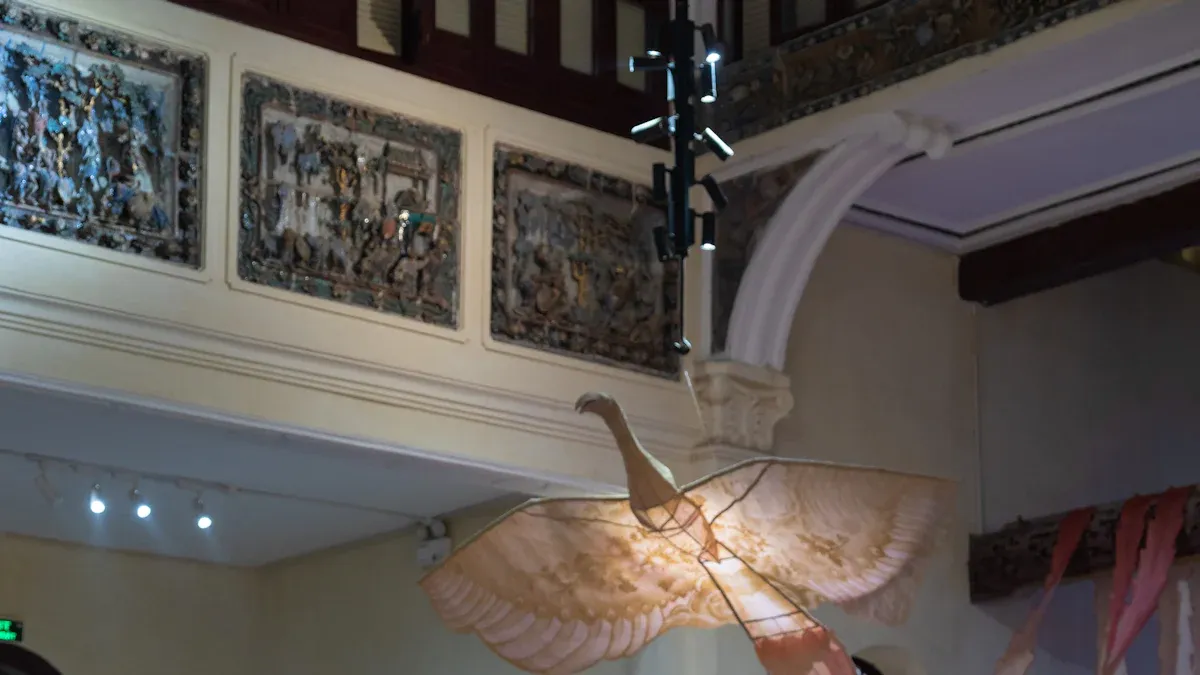
Strategic Placement to Avoid Glare
Proper placement of LED strip lights is essential to avoid glare and ensure a comfortable viewing experience. You can achieve this by using indirect lighting techniques, such as cove lighting, where the 2835 LED strip is hidden within architectural features. This method diffuses the light, creating a soft and even glow. Incorporating diffusers or light casings also helps reduce harsh reflections, making the lighting more artifact-friendly.
To further minimize glare, select fixtures with appropriate shielding and optics. Directional lighting, like LED spotlights or track lighting, allows you to focus the light precisely on the artifact without causing unwanted reflections. Adjustable fixtures provide flexibility, enabling you to aim the light effectively and adapt to different exhibit layouts. By implementing these strategies, you can create a glare-free environment that enhances the visitor experience.
Tip: Avoid using overly bright fixtures, as they can overpower the display and distract from the artifacts.
Highlighting Artifacts with Focal Points
Focal lighting draws attention to specific artifacts, making them the centerpiece of your exhibit. Use 2835 LED strips to create accent lighting that highlights intricate details and textures. Position the strips strategically to emphasize the artifact’s unique features without overwhelming the surrounding space.
For example, placing the LED strip beneath a sculpture or behind a glass display case can create a dramatic effect. Experiment with different angles and distances to find the perfect balance. Adjustable dimmers allow you to control the brightness, ensuring the light complements the artifact rather than overshadowing it.
Balancing Lighting Across the Exhibit Area
Balanced lighting ensures uniform visibility and aesthetic appeal throughout the exhibit. Start by evaluating the size and layout of your space. Identify areas that require more illumination and those that need subtle lighting. Incorporate a mix of lighting types, such as ambient, accent, and task lighting, to add depth and visual interest.
Consider the exhibit’s theme and colors when designing the lighting plan. For instance, warm tones work well in historical displays, while cooler tones suit modern exhibits. Use 2835 LED strips to fill in dark spots and maintain consistency across the area. By understanding the venue’s natural and artificial lighting conditions, you can adapt your strategy to achieve a cohesive and engaging display.
Examples: A combination of LED strip lights and spotlights can create a layered effect, enhancing both the artifacts and the overall ambiance.
Maintaining and Extending the Life of 2835 LED Strips
Cleaning and Regular Maintenance
Regular cleaning keeps your 2835 LED strip functioning at its best. Dust and grime can accumulate over time, reducing light output and efficiency. Use a soft, lint-free cloth to gently wipe the surface of the strip. For stubborn dirt, dampen the cloth slightly with water or a mild cleaning solution. Avoid using harsh chemicals, as they may damage the strip or its adhesive backing.
Inspect the strip periodically for signs of wear or loose connections. Addressing these issues early prevents further damage and ensures consistent lighting. If your strip is installed in a high-traffic area, consider cleaning it more frequently to maintain optimal performance.
Tip: Turn off the power before cleaning to avoid accidents and protect the LED components.
Replacing Damaged Components
Over time, individual LEDs or sections of the strip may fail. Replacing these components promptly ensures your display remains visually appealing. Many 2835 LED strips feature designated cut lines, making it easy to remove and replace damaged sections. Use compatible connectors to reattach the new segment securely.
If the power supply or controller malfunctions, replace them with components from trusted LED lighting kits. High-quality replacements reduce power consumption and extend the lifespan of your setup. Always check compatibility before purchasing new parts to avoid performance issues.
Ensuring Consistent Performance Over Time
To maintain consistent performance, monitor the power consumption of your LED strip. Overloading the power supply can cause flickering or uneven light output. Use a power source that matches the strip’s voltage and wattage requirements.
Invest in dimmers or controllers to regulate brightness and reduce strain on the LEDs. This not only enhances the visual appeal of your display but also minimizes energy consumption. For long-term reliability, consider using aluminum profiles to dissipate heat and protect the strip from physical damage.
Example: Many museums use LED strip light examples with aluminum profiles to ensure durability and consistent lighting across exhibits.
By following these steps, you can maximize the lifespan of your 2835 LED strip while maintaining its efficiency and brilliance.
The 2835 led strip offers a powerful way to enhance your museum exhibits. Its energy efficiency, brightness, and artifact-safe design make it an unbeatable choice. By installing and maintaining these strips correctly, you can create stunning displays. Experiment with placement and dimming to captivate visitors and elevate their experience.
FAQ
What makes 2835 LED strips better than other lighting options for museums?
2835 LED strips offer superior brightness, energy efficiency, and minimal heat emission. They protect artifacts while creating a visually appealing display for visitors.
Can I use dynamic tunable white LED strip lights in museum exhibits?
Yes, dynamic tunable white LED strip lights allow you to adjust color temperatures. This flexibility helps you create the perfect ambiance for different artifacts and exhibit themes.
Are RGB color changing strip lights suitable for museum lighting?
RGB color changing strip lights can enhance interactive or modern exhibits. Use them sparingly to avoid overpowering the visual focus on the artifacts.
See Also
Comparing 2835, 5050, And 3528 LED Strip Options
Selecting The Right LED Strip: 2835, 3528, Or 5050
Evaluating High-Brightness LED Strips For Various Uses
